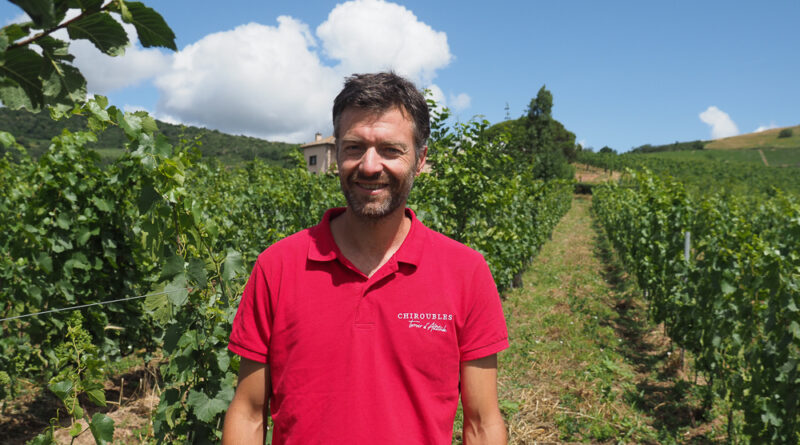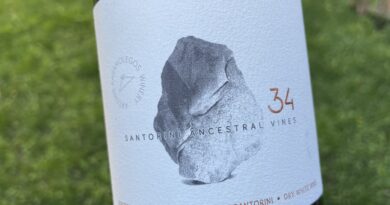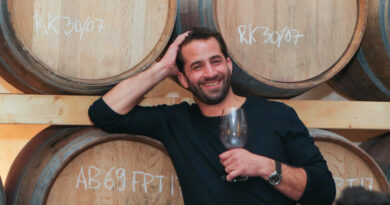Beaujolais adventures (4) Château de Javernand, Chiroubles
Pierre Prost (pictured above) is an articulate advocate of agroecology, something that he’s implementing in the vineyards of Château de Javernand in Chiroubles, which he runs with Arthur Forneau. Javernand is a family property that has been in Prost’s wife’s family since 1917. It’s a single 55 hectare estate with 15 hectares of vines. The upper part is Chiroubles, the highest Cru in Beaujolais with an average altitude of 410 m. They are at 430 m. This is a hilly are with diverse landscapes, and the vines are mainly planted on the south-facing slopes.
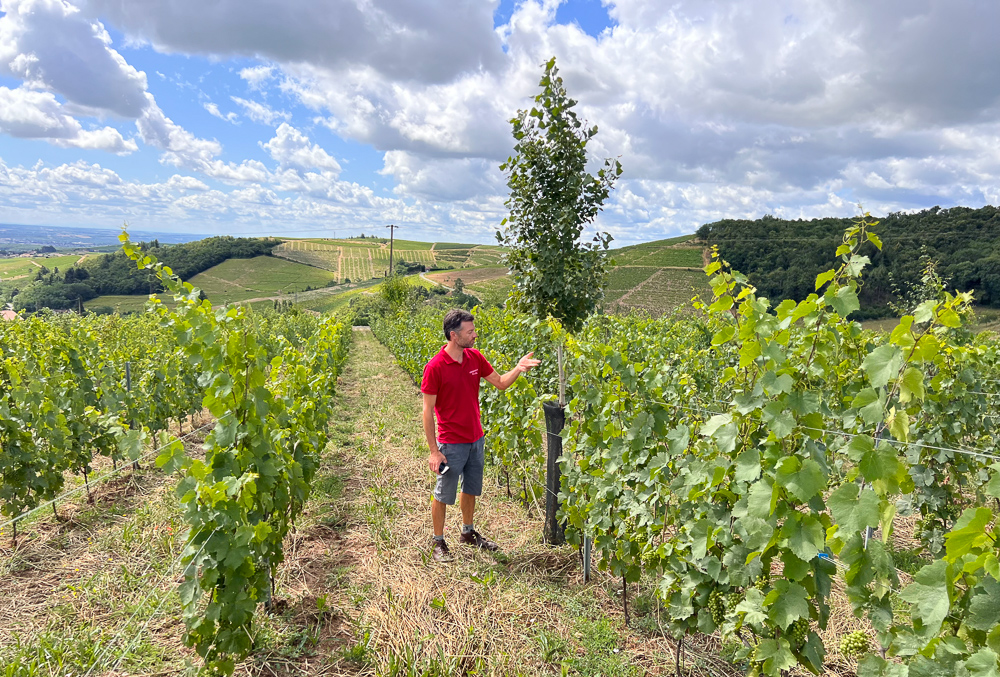
‘I’m really interested in agroecology,’ he says. ‘We made the transition in 2019 but we are trying to go fast. They are experimenting with plant cover, agroforestry and vine physiology, and they are trying to find solutions for the steep slopes with permanent cover crops – these are really hard to cultivate organically. They have founded an association in the region called VVB (Vignerons La Vivant de Beaujolais) which started in 2020 with 20 winegrowers in the region. ‘We were all convinced with the necessity of working with agroecology,’ says Pierre. Having an association like this means that they can attract the big names in agroecology to come and train them – the likes of Konrad Schreiber (a cover crop expert) and Alain Canet (an expert in agroforestry). He also mentions Marceau Bourdarias, who has worked a lot on the physiology of the vine, with an emphasis on driving maximum photosynthesis and carbohydrate reserves, with lots to say about pruning. Only the living wood in the vine can store carbohydrates, so pruning to avoid accumulating dead wood is very important.
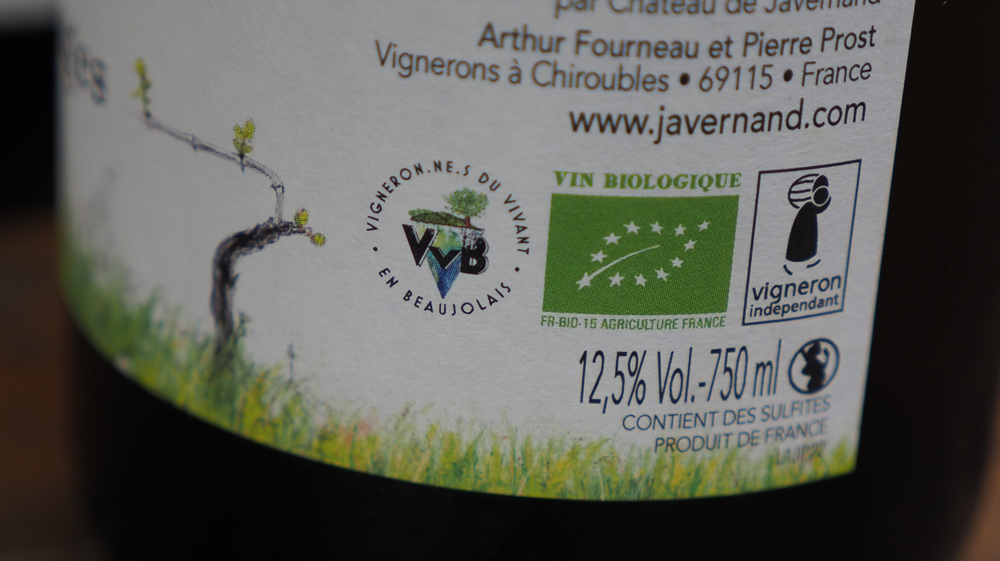
Javernand converted to organics at the same time they decided to do agroecology, but did it over 5 years. They had a loss of yield but not at the same time on every plot.
The estate is made of two parts. The historical part in Beaujolais is from Pierre’s wife’s family, but his father was also a winegrower in Mâconnais, and the two are joined together.
Back to the VVB. ‘The main thing about the association is about sharing experience,’ says Pierre. ‘We also share our time. The 20 vineyards together ordered 6000 trees and planted them, so there were several groups. One was working on the trees, so we don’t have to be a specialist on everything. One group ordered the trees and negociated a discount. You get the trees as young as possible because you don’t want to cut the tap root.’
Prost says that with the traditional way of planting in Beaujolais, with 10 000 vines a hectare as bush vines, planted at 1 m x 1 m, having permanent cover in the vineyards is almost impossible. They aren’t giving up, though, and have a botanist working with them at VVB to find the ideal cocktail of plants.
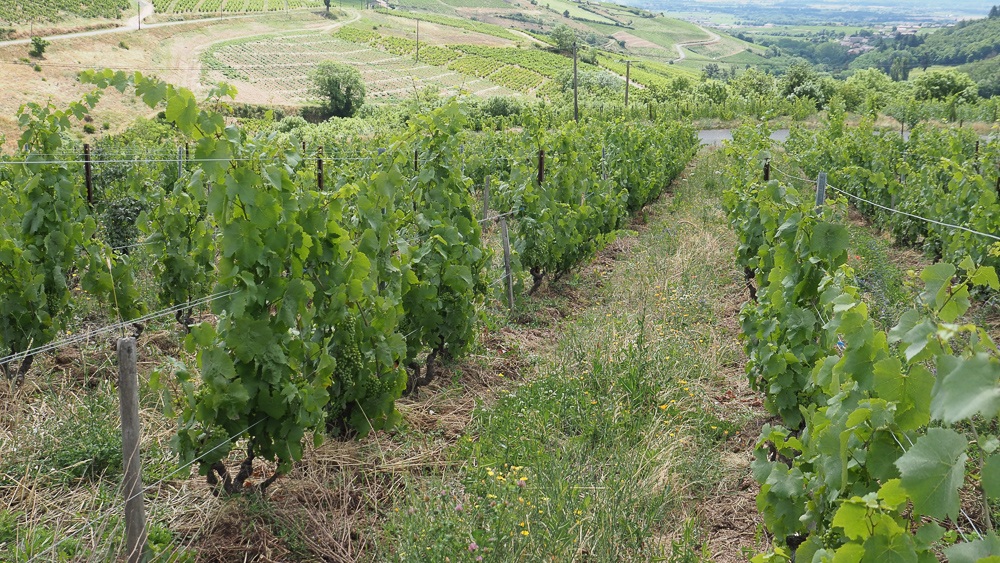
We looked at a plot where a row of vines had been removed. ‘It’s almost impossible to do agroecology in high density plantings,’ says Pierre, ‘but with 2 m row space you can do anything. You can do great with plant cover.’ As well as taking out a row of vines, he has put a cover in. The idea is that instead of having 10 000 vines a hectare at 1 m high, he will have 5000 at 2 m high. The vines will adapt, and eventually there will be as much photosynthesis in the vines on the plot as there was before. ‘You won’t get the same yields as before, but maybe 45 hectolitres/hectare,’ he says. One advantage is that there are fewer vines to prune, and with appropriate de-budding you let the reserves come from a few very healthy shoots. The cover crop grows and then is rolled to provide a mulch for the peak of the growing season.
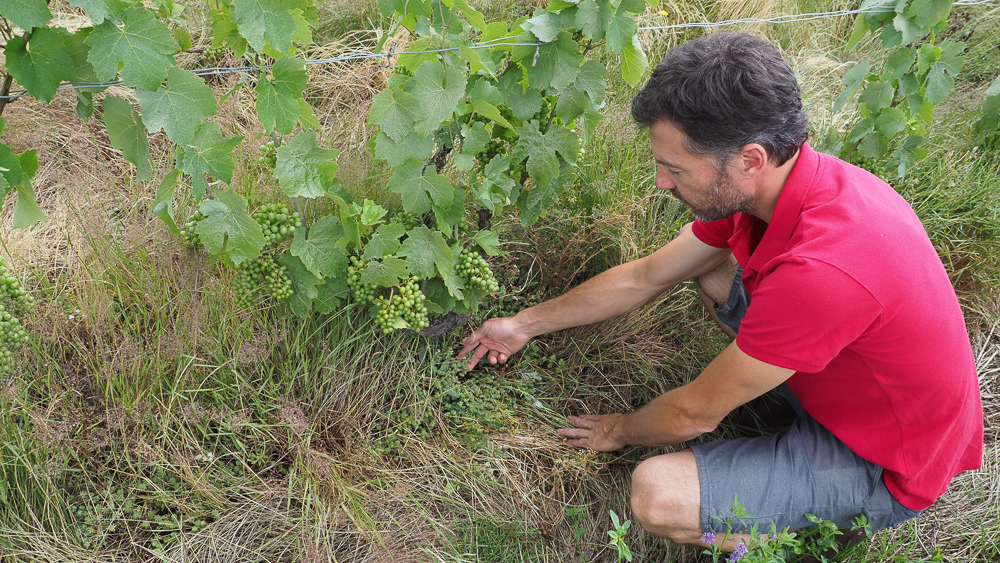
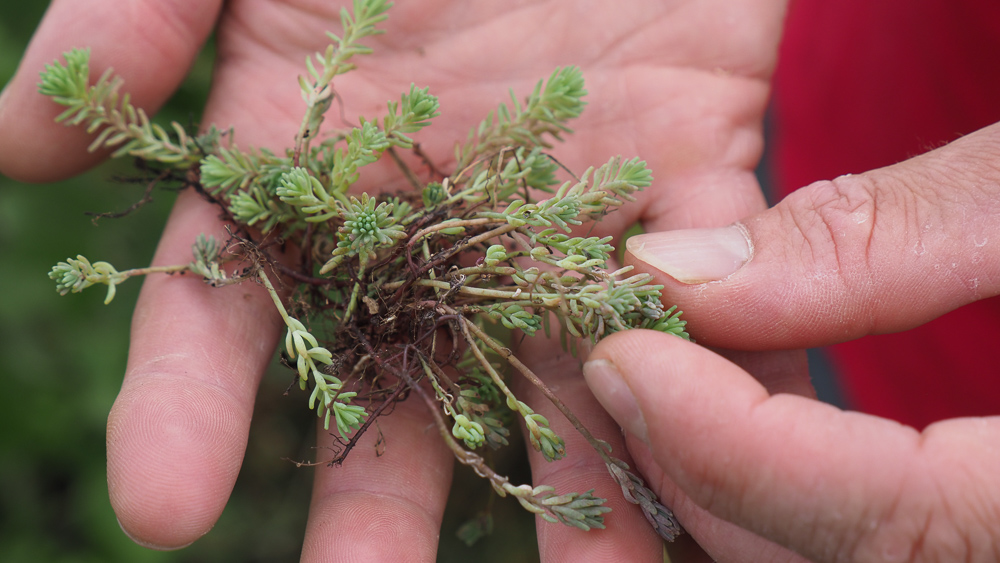
After the last 100 years of intensive viticulture, the soils of Beaujolais have very little organic matter. Currently most are less than 1% organic matter, and the goal is to get them to 2% through the use of appropriate cover crops.
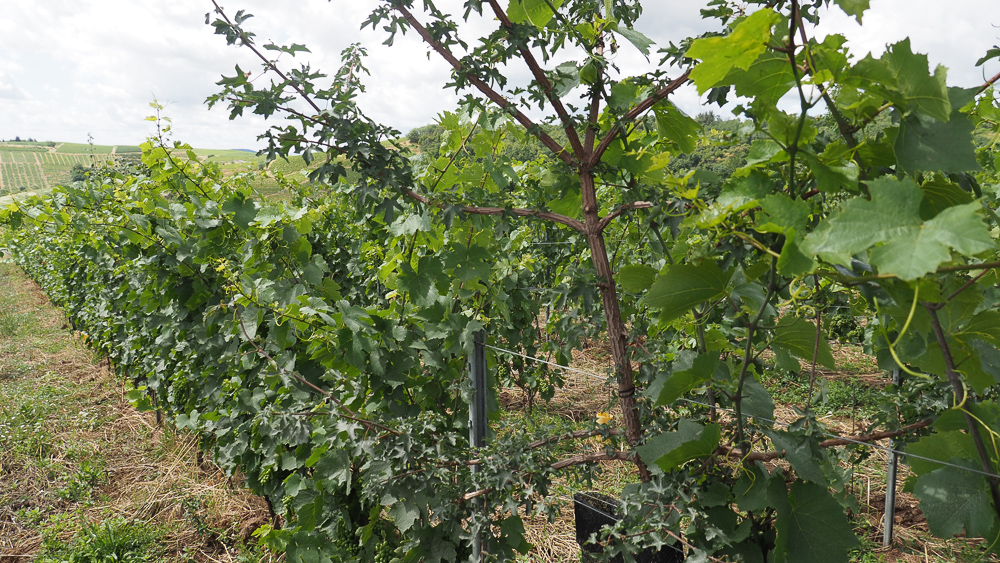
The second stop is a vineyard of 3 hectares that has recently been replanted at a density of 2 m x 0.8 m, giving 6250 vines per hectare. This is on an east-facing hill, and 250 of the vines have been replaced by trees, in the vine rows themselves. These trees will be coppiced to keep them at a certain size every two or three years. This keeps the trees from providing too much shade, and then shoots cut will be returned to the soil to add more organic material. There are three rationales behind the tree planting. The first is to bring more diversity to the vineyard. The second is climatic dampening, protecting vines from heat and wind (which can dry the soils). And the third is to increase mycorrhizal associations, helping the vines out. They are doing everything they can to have more of these fungal associations, to make the vines more resilient to heat and drought. The vineyard was planted in 2019. As well as trees in the vines, they are also building up hedgerows to join the upper and lower parts of the vineyard as a reservoir for biodiversity. They’d like more bats and birds in the vineyard to deal with insects: bats can eat 150 moths a night.
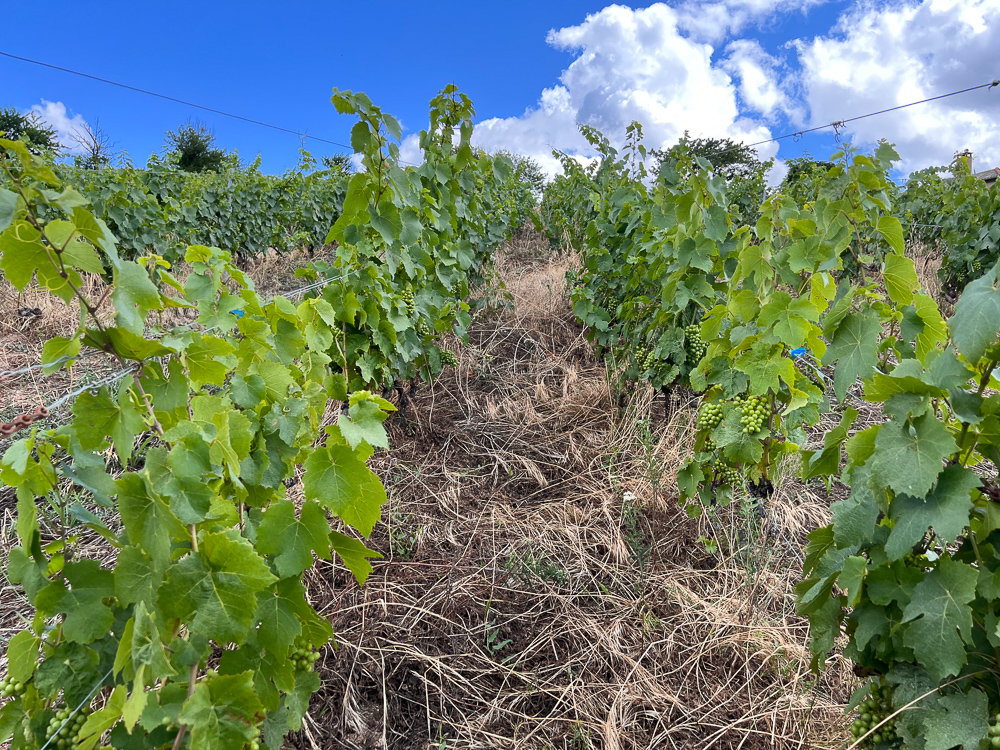
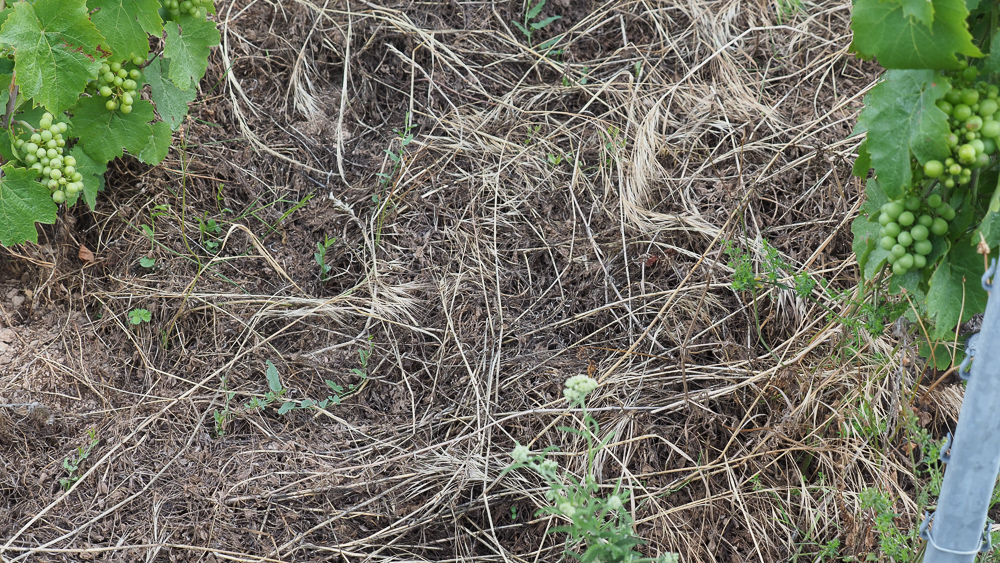
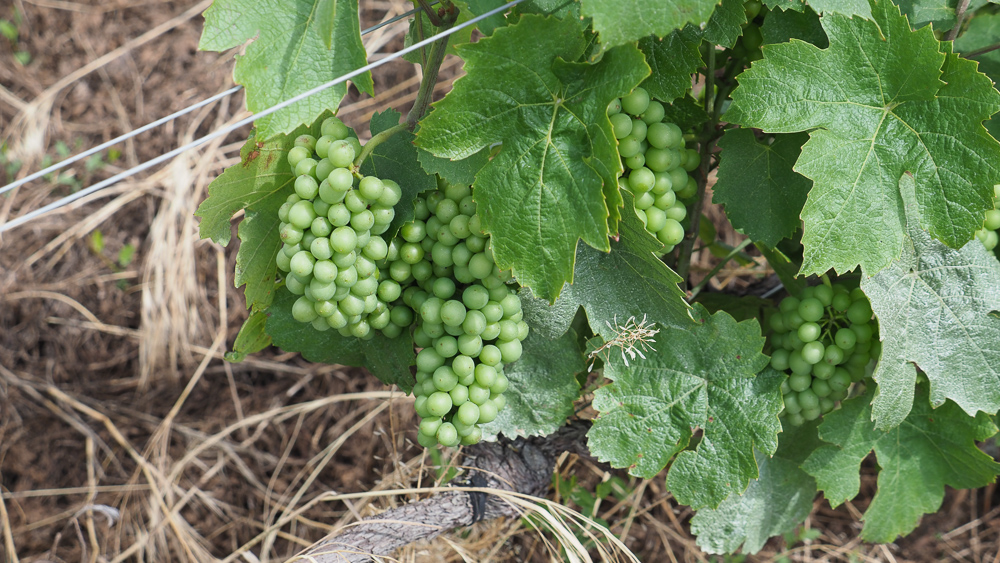
The third stop is a plot of high density where the cover crop is subterranean clover (Trifolium subterreaneum). This grows in the winter, and in mid-May it dried out and makes seeds, which it then brings back into the soil, and which then develop underground. It suppresses other weeds. ‘In a steep, narrow row this could be very interesting,’ says Prost. Their initial results have been mildly encouraging: it grows well, and there is only a slight suppression of the vine growth.
THE WINES
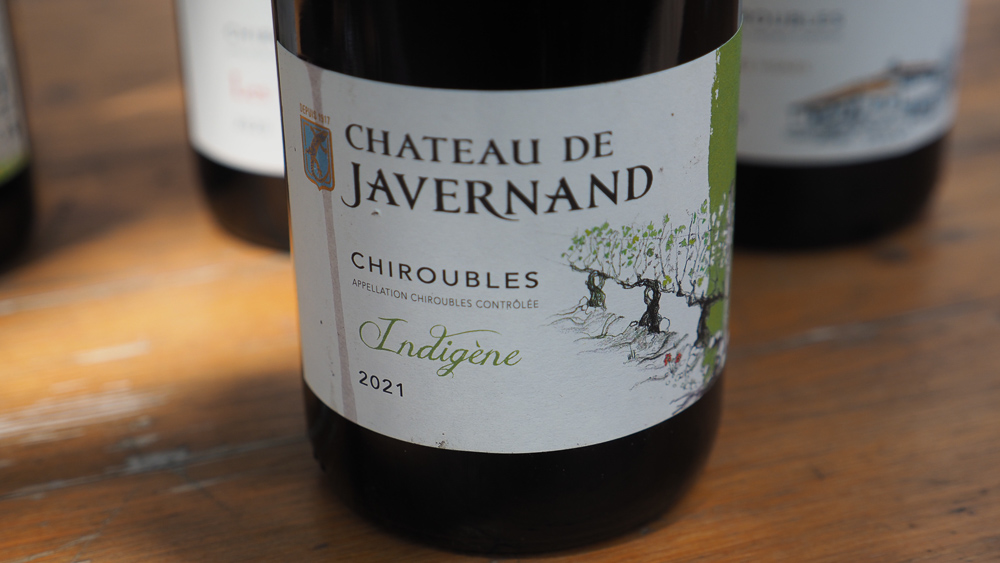
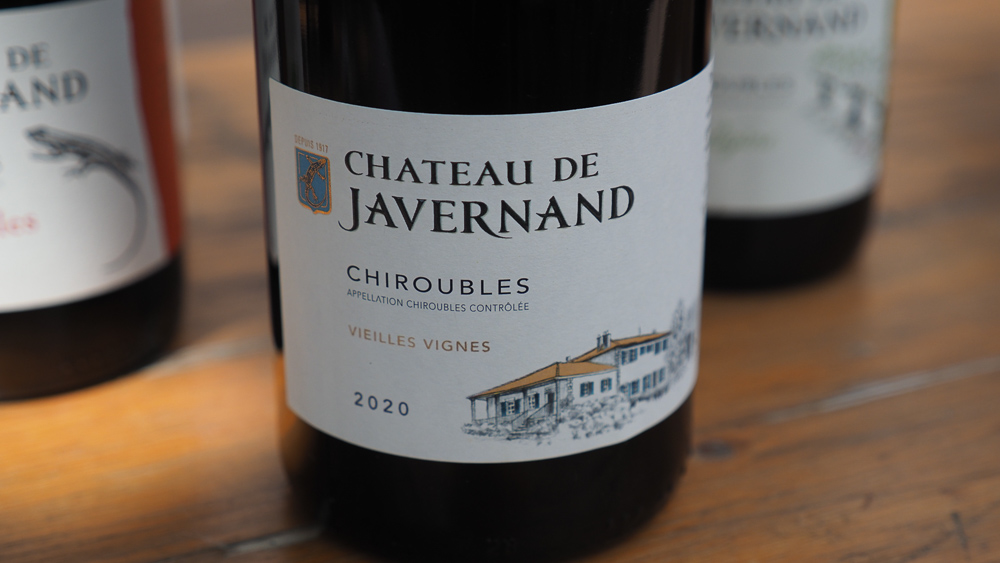
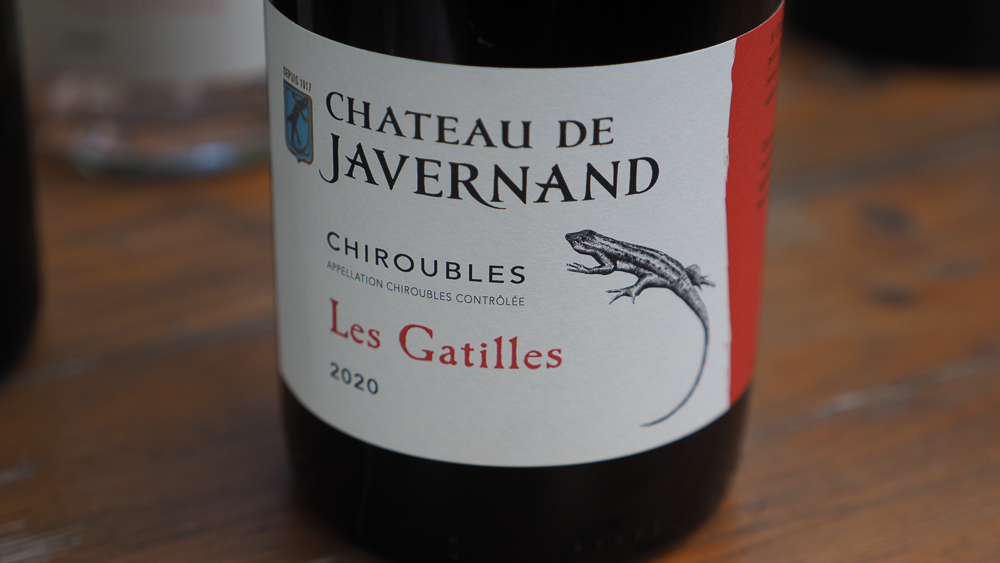
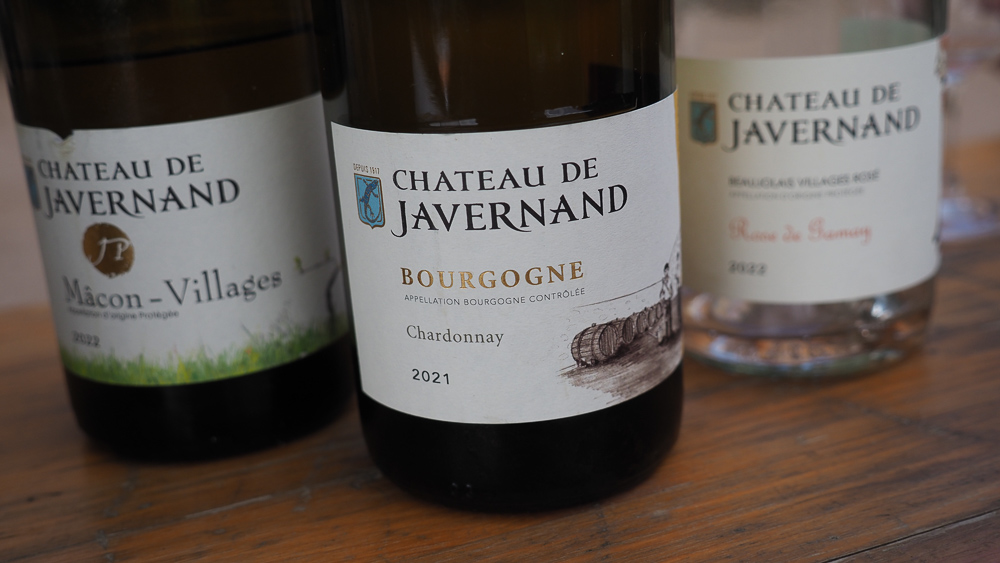
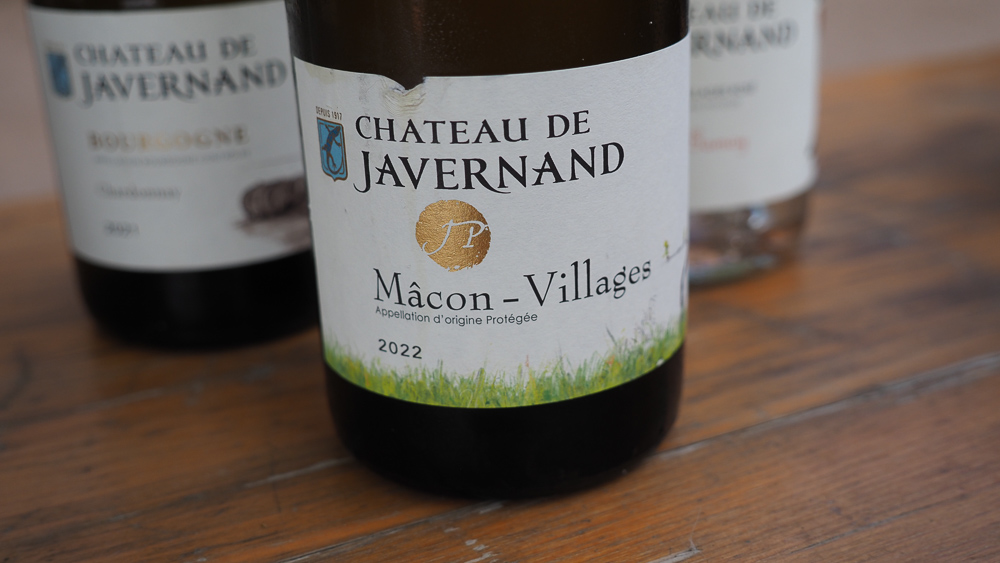
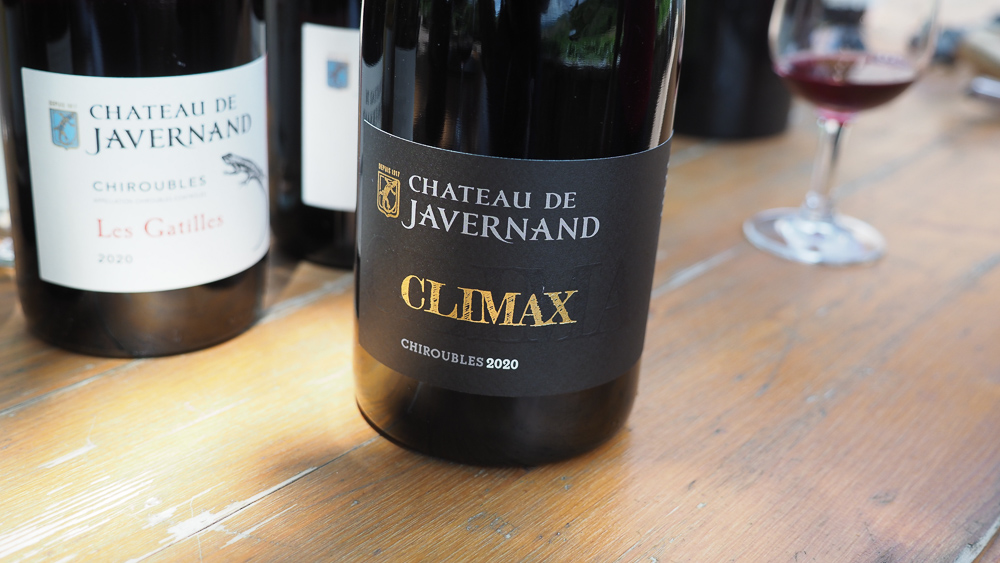
Château du Javernand Mâcon-Villages 2022 Bourgogne, France
Wild yeast, no sulfites in vinification, cool ferment. Ageing in concrete tanks without sulfites until it needs it. They use a microscope to check for good yeasts during fermentation and taste regularly for any sign of oxidation. Linear and bright with textured pear and apple fruit, showing lovely citrus fruit on the finish. Very appealing with nice brightness and a slighgt stony finish. 91/100
Château du Javernand Bourgogne Chardonnay 2021 France
Old vines from Mâconnais, aged in barrels. Start fermentation in tank then go to barrels. Linear, bright and lemony with some nutty, spicy oak character. Has high acidity. Juicy and linear with nice intensity. 90/100
Château du Javernand Beaujolais Villages Rosé Gamay 2022 France
Pale pink colour. From new plantations in Chiroubles. This has a hint of liqourice and nice cherry and pear fruit. Lovely brightness and focus with a nice acid line. Juicy and quite satisfying. 90/100
Château du Javernand Chiroubles Les Gatilles 2020 Beaujolais, France
In Chiroubles we are doing more and more carbonic maceration after trying destemming: it’s best adapted for Gamay on granitic soil. We have worked a lot on fine tannins. Grapes go into tank, almost no pumpover, but still we do one or two vinifications with destemming. Juicy and supple with ripe cherry and plum fruit. Elegant and supple with lovely fruit and fine-grained tannins. Shows drinkability as well as a hint of seriousness. 93/100
Château du Javernand Chiroubles Vielles Vignes 2020 Beaujolais, France
40 years plus vines. 50% carbonic, 50% destemmed. Lovely texture and weight with sweet cherries and plums as well as fine spices and a bit of structure. Nice fine tannins here with a hint of mint and some herbal detail. Grainy and nicely grippy but with sweet, elegant fruit. 93/100
Château du Javernand Chiroubles Indigène 2021 Beaujolais, France
Made since 2013 – this was the first wine with wild yeast (although they do it all the time now). For this they select the tanks able to age without sulfites. 10 mg/ml added at bottling. They have done some years with none ever. So floral and supple with red cherries and plums as well as silky texture and fine-grained tannins. Nice brightness with lovely purity and elegance. So fine. 94/100
Château du Javernand Chiroubles Climax 2020 Beaujolais, France
14% alcohol. This refers to the state the natural ecosystem works without human intervention. ‘We are looking at the best equilibrium we can,’ he says. They selected the best lots with good concentration, good maturation but still fine tannins. 40 days maceration for this at low temperature. There is also some press juice. All aged in barrels. Lovely spicy detail here with good structure, fine-grained tannins and sweet cherries and plums. Very stylish and nicely balanced with good structure and intensity. 93/100
Find these wines with wine-searcher.com

